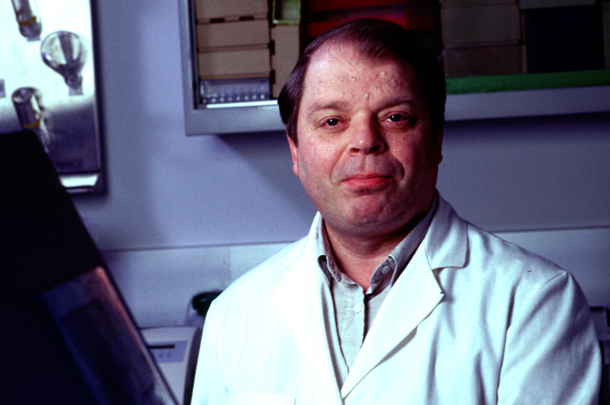The association between menstrual cycle activity and breast and ovarian cancer risk may have an unexpected intermediary – odors.
Keck Medicine of USC researchers have discovered for the first time that the estrous cycle (the equivalent of the human menstrual cycle) was more readily stimulated by scent in mice that had been genetically altered to carry a mutation known to cause predisposition to breast and ovarian cancer in humans. Even more surprising was the finding that the ovary, and not the nose, mediated the signals.
“This research indicates that a better sense of smell may contribute to the elevated cancer risk of women with BRCA1 mutations,” said corresponding author Louis Dubeau, MD, PhD, professor of pathology and medical director of molecular pathology, USC Norris Comprehensive Cancer Center. “We found that the presence of the mutation in the ovary mediated a stronger response to scent, implying that the mutation may influence the menstrual cycle, which in turn is an established risk factor for breast and ovarian cancer.”
The research was published Oct. 21 in the peer-reviewed journal PLOS ONE.
Springing off the observation that menstrual cycles often synchronize between female college roommates, indicating some sort of communication with environmental signals, the scientists compared female mice genetically engineered to carry the BRCA1 mutation to normal, or wild-type mice. They isolated the females from males, causing estrous to pause in the females. When the females were exposed to male bedding, those with the BRCA1 mutation restarted estrous faster than the wild-type mice.
To confirm that the results were mediated by the ovary independently of the nose, the scientists transplanted ovaries from mice with the BRCA1 mutation into wild-type mice and also transplanted ovaries from normal mice into the genetically engineered mice carrying the mutation. The wild-type mice with the BRCA1 mutation present in their ovarian transplants responded more quickly when introduced to the male scent than mutant mice with wild-type ovarian transplants carrying the mutation in all tissues except the ovary.
“We’ve known for a long time that smell receptors are expressed in all kinds of tissues, but we know very little about what these receptors do outside of the nose,” Dubeau said. “Only certain tissues in the breast and reproductive organs have an elevated cancer risk in women who carry a BRCA1 mutation. We found that BRCA1 mutations do not only influence these tissues directly, but also indirectly by changing how they communicate with other cells. This research is one of several examples shown in my laboratory where BRCA1 controls how different cells communicate from a distance. If we can understand how disruption in such communications leads to elevated cancer risk in BRCA1 mutation carriers, we can develop therapies to control these cancers, including perhaps therapies based on smell.”
Other USC researchers who contributed to the study include Ying Liu, Yuan Tang, Elena Enbom and Theresa Austria of the Department of Pathology, Vasu Punj of the USC Norris Comprehensive Cancer Center Bioinformatics Core and Division of Hematology, Frank Z. Stanczyk, Yvonne G. Lin and Sara Mucowski of the Department of Obstetrics and Gynecology and Nancy Wu, Hai-Yun Yen and Robert Maxson of the Department of Biochemistry and Microbiology, USC Dornsife College of Letters, Arts and Sciences.
— Margaret Trtryan


